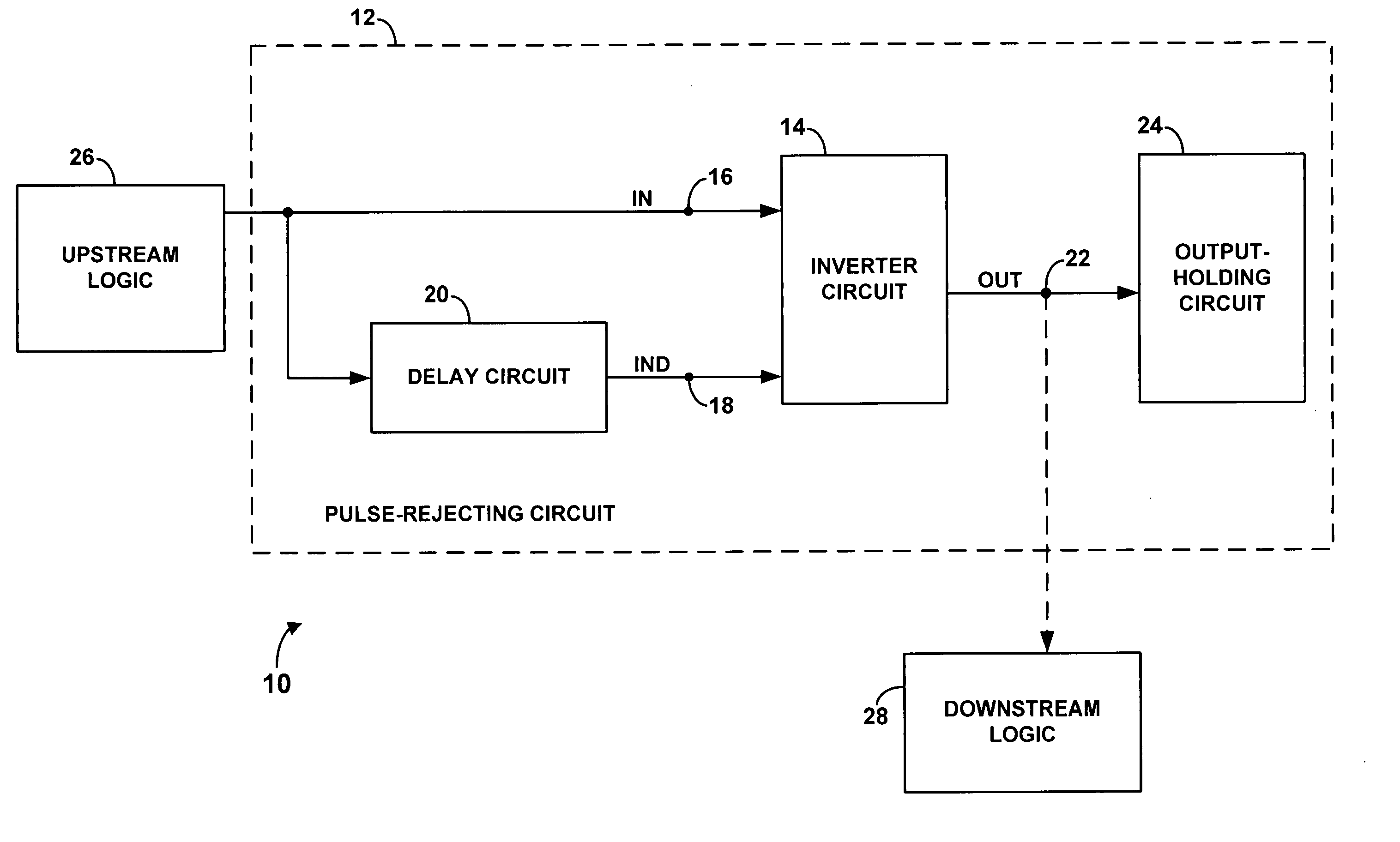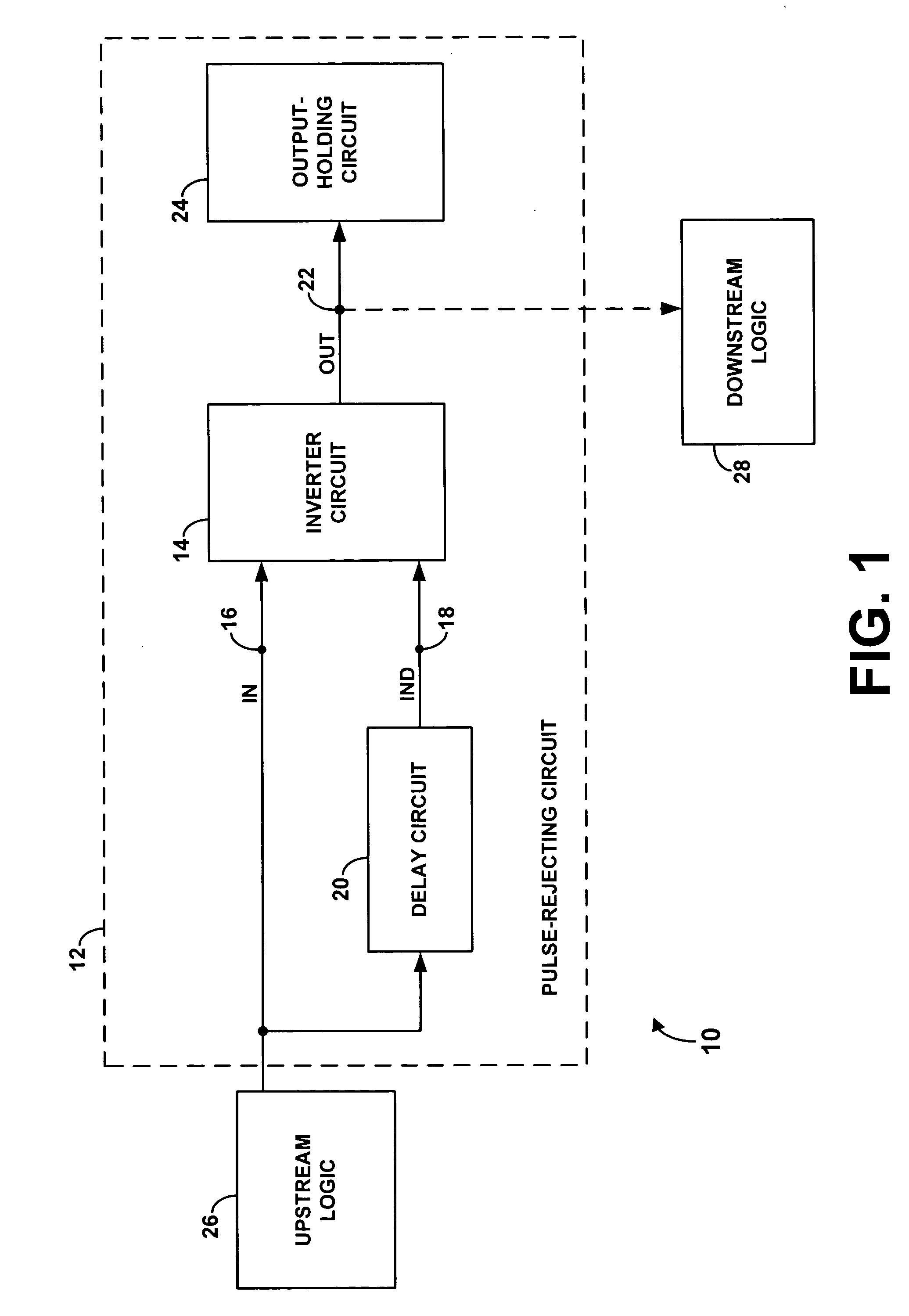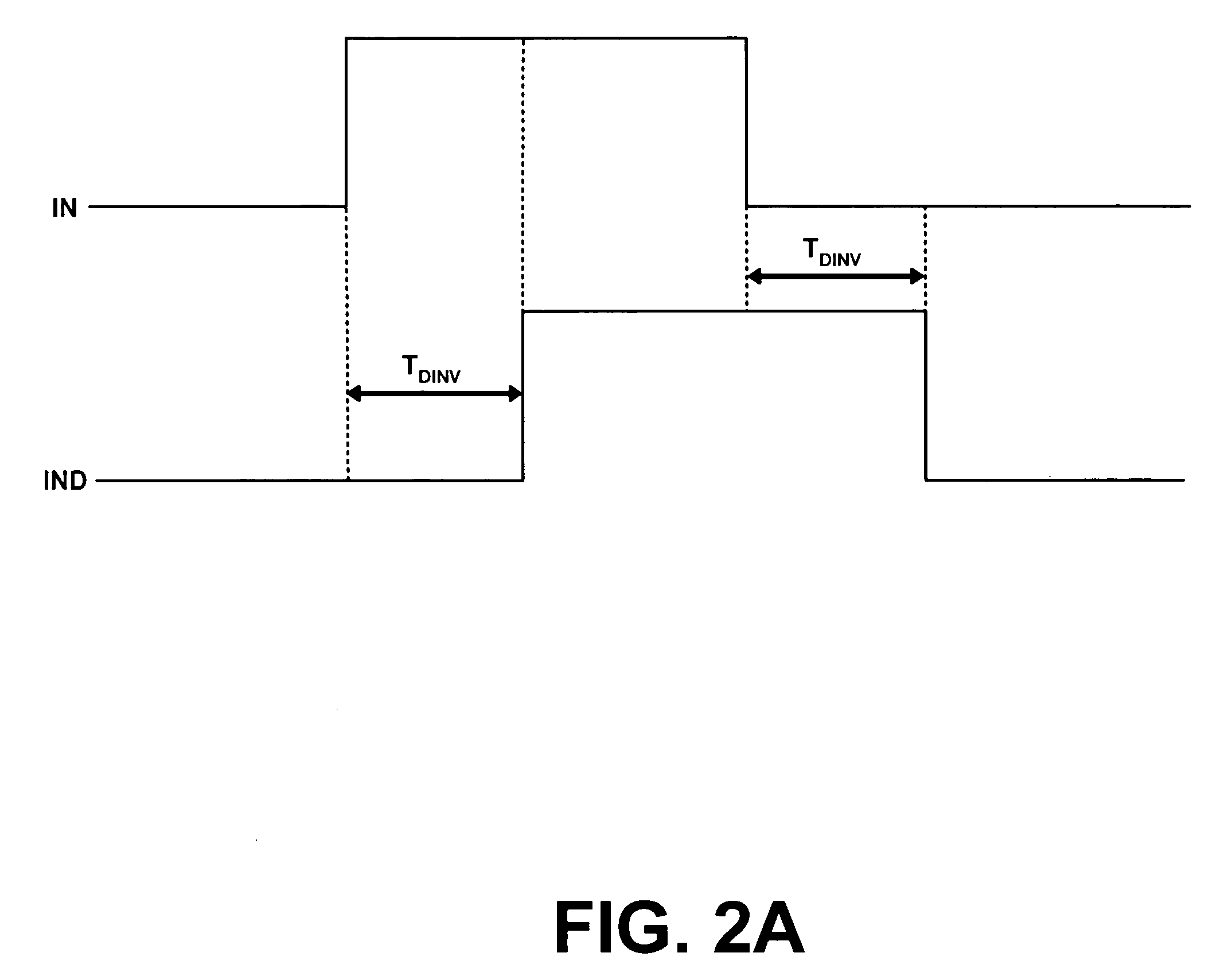Pulse-rejecting circuit for suppressing single-event transients
a single-event, pulse-rejecting technology, applied in the direction of logic circuits, pulse automatic control, pulse technique, etc., can solve the problems of solid-state circuits being vulnerable to disturbances, loading wrong data states into latches, and likely problems
- Summary
- Abstract
- Description
- Claims
- Application Information
AI Technical Summary
Benefits of technology
Problems solved by technology
Method used
Image
Examples
Embodiment Construction
1. Overview
[0026]FIG. 1 illustrates a simplified block diagram of a logic circuit 10, which includes a pulse-rejecting circuit 12 in accordance with a disclosed embodiment of the present invention. As illustrated in FIG. 1, pulse-rejecting circuit 12 comprises an inverter circuit 14 that receives input signals via a direct input 16 and a delayed input 18, a delay circuit 20 coupled to delayed input 18, and an output-holding circuit 24 coupled to an output 22 of inverter circuit 14. Additionally, direct input 16 may be coupled to an upstream logic block 26, whereas output 22 may coupled to a downstream logic block 28.
[0027] In operation, an input signal IN and a time-delayed version of the IN signal are fed into inverter circuit 14 via respective direct input 16 and delayed input 18. More particularly, as shown in FIG. 1, the IN signal present on direct input 16 passes through delay circuit 20 and appears on delayed input 18 as a time-delayed input signal IND. For the purposes of ...
PUM
 Login to View More
Login to View More Abstract
Description
Claims
Application Information
 Login to View More
Login to View More - R&D
- Intellectual Property
- Life Sciences
- Materials
- Tech Scout
- Unparalleled Data Quality
- Higher Quality Content
- 60% Fewer Hallucinations
Browse by: Latest US Patents, China's latest patents, Technical Efficacy Thesaurus, Application Domain, Technology Topic, Popular Technical Reports.
© 2025 PatSnap. All rights reserved.Legal|Privacy policy|Modern Slavery Act Transparency Statement|Sitemap|About US| Contact US: help@patsnap.com



